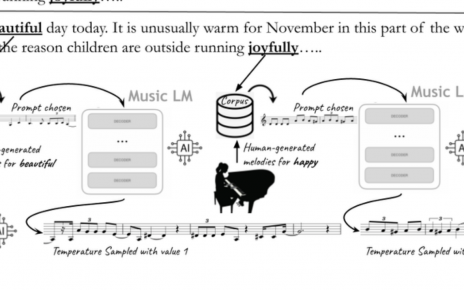By Aliénor Golvet, Louise Goupil, Pierre Saint-Germier, Benjamin Matuszewski, Gérard Assayag, Jérôme Nika, Clément Canonne.
Psychology of Aesthetics, Creativity, and the Arts, 2024, 18 (2), pp.182
Abstract: Agents engaged in creative joint actions might need to find a balance between the demands of doing something collectively, by adopting congruent and interacting behaviors, and the goal of delivering a creative output, which can eventually benefit from disagreements and autonomous behaviors. Here, we investigate this idea in the context of collective free improvisation-a paradigmatic example of group creativity in which musicians aim at creating music that is as complex and unprecedented as possible without relying on predefined plans or individual roles. Controlling for both the familiarity between the musicians and their physical co-presence, duos of improvisers were asked to freely improvise together and to individually annotate their performances with a digital interface, indicating at each time whether they were playing « with », « against », or « without » their partner. At an individual level, we found that musicians largely intended to converge with their co-improviser, making only occasional use of non-cooperative or non-interactive modes such as « playing against » or « playing without ». By contrast, at the group level, musicians tended to combine their relational intents in such a way as to create interactional dissensus. We also demonstrate that co-presence and familiarity act as interactional smoothers: they increase the agents’ overall level of relational plasticity and allow for the exploration of less cooperative behaviors. Overall, our findings suggest that relational intents might function as a primary resource for creative joint actions.




